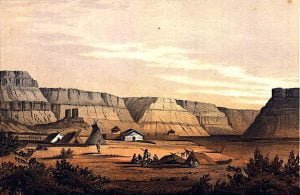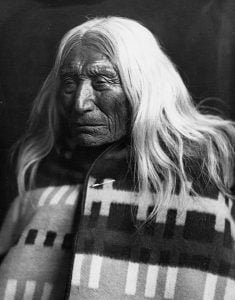The Yakima War, 1855-56
Governor Stevens sent James Doty to notify the tribes of a series of councils to be held in May, 1855, the first of which was to be attended by the Yakima, Cayuse, Walla Walla, and Nez Perce. Kamiakin, chief of the Yakima, selected as the council ground a place in the Walla Walla Valley not far from Waiilatpu. Governor Stevens and Superintendent Palmer were escorted there by Lt. Archibald Gracie and 47 dragoons. The presents for the chiefs were stored at Ft. Walla Walla. Comfortable arrangements were made at the council grounds and on May 24th the first of the … Read more





